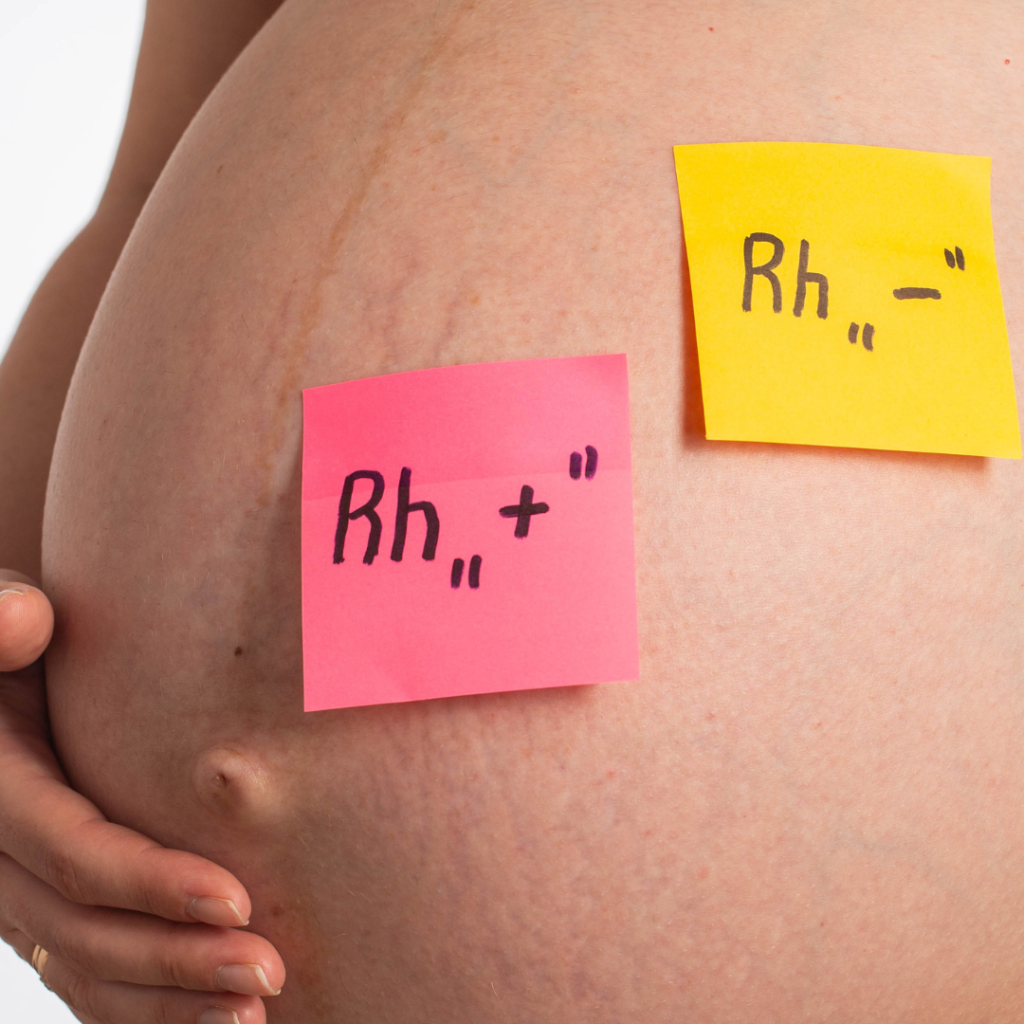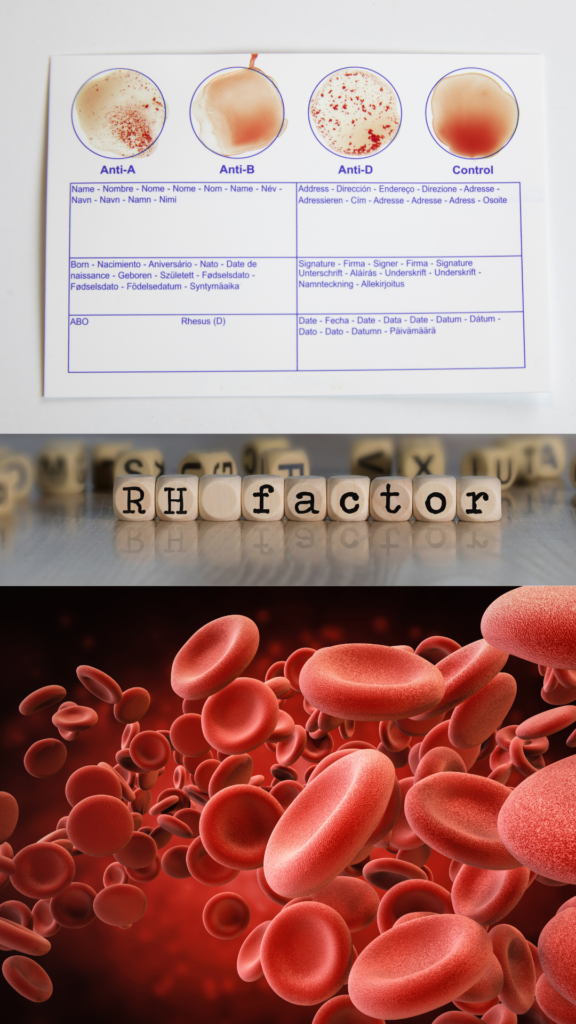By Options RN- Louise Hall


What is Rh-factor?
Rh-factor refers to an antigen that is on the outside of red blood cells. Antigens are proteins that help the body identify what belongs versus what is foreign. Anything identified as foreign is destroyed.
Not all people have Rh-factor on their red blood cells. Those that have it are called Rh-positive, and those that don’t are Rh-negative. Rh-factor is important in several contexts, but especially during pregnancy and blood transfusions. This is because if someone is Rh-negative and gets Rh-positive blood in their bloodstream, their body will try to destroy all the Rh-positive blood cells.
How does Rh-factor relate to pregnancy?
Rh-factor is controlled by your DNA. You get one set of DNA from your mother and one set from your father. Rh-positive is a dominant gene, meaning that if you have DNA that codes for Rh-positive from one parent, you will have Rh-positive blood. To have Rh-negative blood, both sets of DNA have to code for Rh-negative blood. This means that Rh-negative blood is more rare than Rh-positive blood types (about 15% of Americans are Rh-negative). If a woman is pregnant and she has Rh-negative blood, but her partner has Rh-positive blood, there is a possibility that the baby she is carrying is also Rh-positive. During a healthy pregnancy, a small amount of baby’s blood might enter the maternal blood stream, but not enough to cause a reaction. But there are some events surrounding pregnancy that can expose the woman to larger quantities of the baby’s blood. These events include miscarriage, induced abortion, certain tests that look for chromosomal abnormalities (such as amniocentesis or chorionic villus sampling), hemorrhage related to placenta previa or abruptio placentae, and childbirth.
What happens if a woman is exposed to Rh-positive blood if she is Rh-negative?
For the current pregnancy, exposure to Rh-positive blood probably won’t cause harm to the baby. It takes time for the mother’s body to develop antibodies that attack Rh-positive blood cells. The real effects show up in later pregnancies, because the antibodies are already waiting in the mother’s body. The risks are mostly on the side of the baby, not the woman, because the baby’s blood is being attacked by the mother’s antibodies. This can cause anemia, jaundice, and in severe cases, neurological disease and congestive heart failure.
If a woman has already been sensitized during a previous pregnancy and has antibodies against Rh-factor, the doctor will monitor her and her baby throughout the current pregnancy. If both are fine, nothing needs to be done. But if there is risk for the baby, they can start treatments even before the baby is born to reduce any side effects or harm.
Can these side effects be prevented?
Yes! There is a medication called RhoGAM that can prevent harm to future pregnancies. RhoGAM is “a commercial preparation of passive antibodies against Rh factor” that “prevents the formation of active antibodies against Rh-positive erythrocytes [red blood cells]” (Foundations of Maternal-Newborn Nursing).
How does a doctor give RhoGAM?
First, a woman who is Rh-negative will be tested to make sure that her body doesn’t have antibodies against Rh-factor. This test is usually done at her first prenatal visit. If her test is negative, nothing is done right away, but around 28 weeks the doctor will retest the patient, and if the results are still negative, they will give her a shot of RhoGAM. If a woman is Rh-negative, RhoGAM should also be given within 72 hours after any of the events listed above. In the case of childbirth, a sample of blood can be taken from the umbilical cord to be tested for Rh-factor. If the baby is Rh-negative, there is no need to give the woman the second shot of RhoGAM, but if the baby is Rh-positive, the dose will be given.
How do I learn my Rh-factor type?
You can learn about your blood type in a couple different ways. You can ask your doctor to test your blood type when you have other lab work done or, if you donate blood (such as through the Red Cross), your blood will be typed then.
References: Foundations of Maternal-Newborn Nursing (Fourth Ed). Murray, S. S. and McKinney, E. S.
